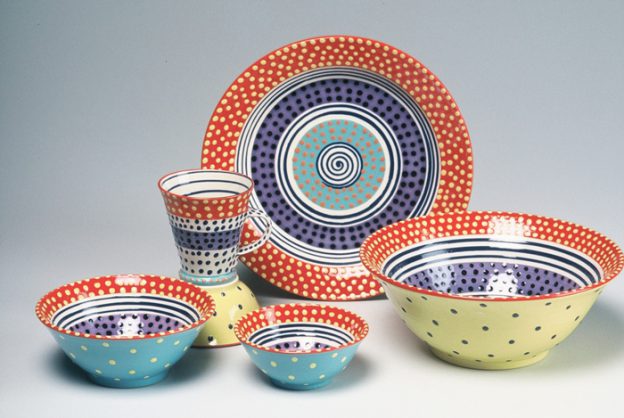I was first introduced to clay at the young age of four. My father would bring clay home from the farm dam and fashion farm animals from it on the kitchen table. Some years later this interest was build on by my mothers’ appreciation of antique china and pottery she sold in her antique shop. Add to this an active interest in archaeology and an inspiring high school art teacher and a career in ceramics would ensue.
Since completing a degree in ceramic design in 1983 I have worked full time as a studio potter in a number of countries, taught, and worked on a number of archaeological ceramic excavations.
I enjoy making work that is witty and fun and can be used every day, works that show individuality, the processes of their creation and hopefully reflect a sense of time and place. The ceramics I make almost entirely revolve around the concept of ‘vessels’ or objects that can be used to eat and drink from or contain something. My work is very decorative and distinctive. The techniques I employ give a raised, textured surface to the decoration. The exuberant use of colours or bold black and white designs extensively covering the surfaces of my work, add to the overall effect. The aesthetic elements are as important to me as the functional considerations, the two coming together to create a uniquely individual object.
The roots of my decorating techniques lay in the 16th/17th centuries’ slip trailed wares of English folk potters such as the Toff and Simpson families, the last such work produced in England before the advent of the Industrial Revolution. My decoration is largely inspired by basic design elements that can be found in all ancient civilizations- spots, spirals, circles, linear patterns and stripes. Whether it is just pattern or imbued with meaning is another story!
I still find very magical and grounding that the elements of earth, water, air and fire are all involved in the making of ceramics. I hope others will find the same level of enjoyment in using these pieces each day as I have had in making them.
If you would like to view more of Lincoln Kirby-Bell’s work, please click on his tag in the right hand column.

